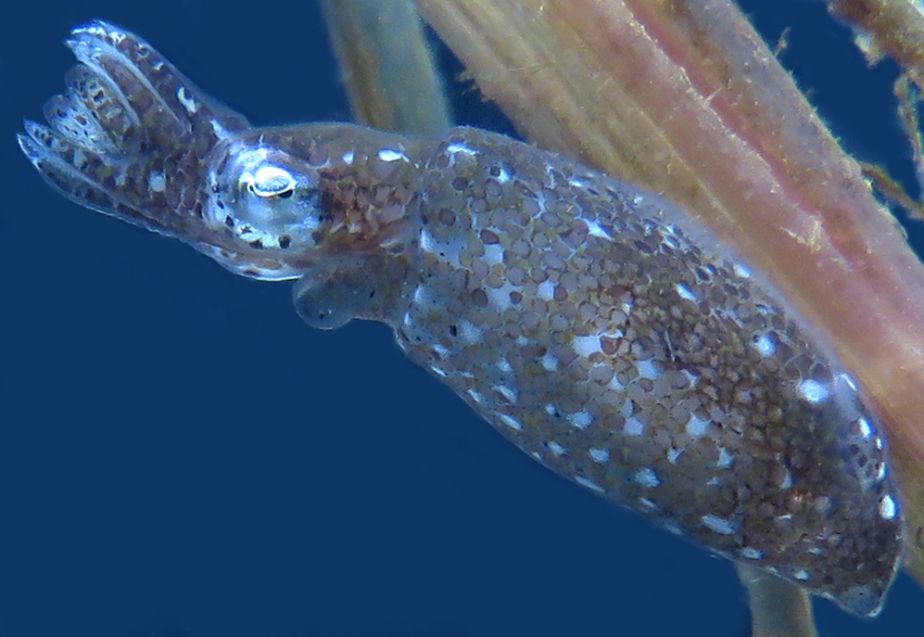Media Releases
New pygmy squid discovery

They’re tiny, cute, and play an important role in marine ecosystems: researchers have discovered a new species of the thumbnail-sized pygmy squid.
James Cook University’s Associate Professor Jan Strugnell, along with Dr Mandy Reid from the Australian Museum Research Institute, have officially declared the new finding, naming it Idiosepius hallami, or Hallam’s Pygmy Squid (named after Mandy’s son, Hallam who helped her collect live animals for Jan’s DNA work).
Dr Strugnell said the discovery is significant because there is quite a bit of confusion surrounding the tiny squids, in terms of how many species there are and where they are found, both in Australian waters and beyond.
“We know a lot more about the larger (and often edible) squid species, but these tiny ones are often overlooked. This discovery led to a broader examination of all the species known from this family of tiny squids and also resulted in a revised classification and better understanding of the group as a whole.”
Dr Strugnell said the pair first discovered the new squid among the collections of the Australian Museum in Sydney.
Dr Reid said, “People are often surprised to know that so many marine animals are still undiscovered and unnamed. Many are sitting in museum collections waiting to be studied”.
The discovery of this species in the preserved specimen collection in Sydney led to a search to find additional examples and preserve them in ways that make them suitable for Dr Strugnell to perform molecular sequencing.
Dr Strugnell said Pygmy Squid are an important part of the ecosystem.
“They live among mangroves and seagrass, which are under threat and are among the planet’s most effective carbon absorbers. So, an increased understanding of these habitats and what lives in them is of great importance,” she said.
The squid lives in eastern Australian waters, from Sabina Point (Shoalwater Bay, Qld) to Narooma in southern NSW.
Images and video here. Please caption and credit as below.
Idiosepius hallami, attached to a seagrass blade, Cudgen Creek, northern NSW. Images: M. Reid
Video credit: Mark McGrouther, Australian Museum Research Institute.
Associate Professor Jan Strugnell - JCU
E: jan.strugnell@jcu.edu.au
Dr Mandy Reid – The Australian Museum Research Institute
E: mandy.reid@austmus.gov.au